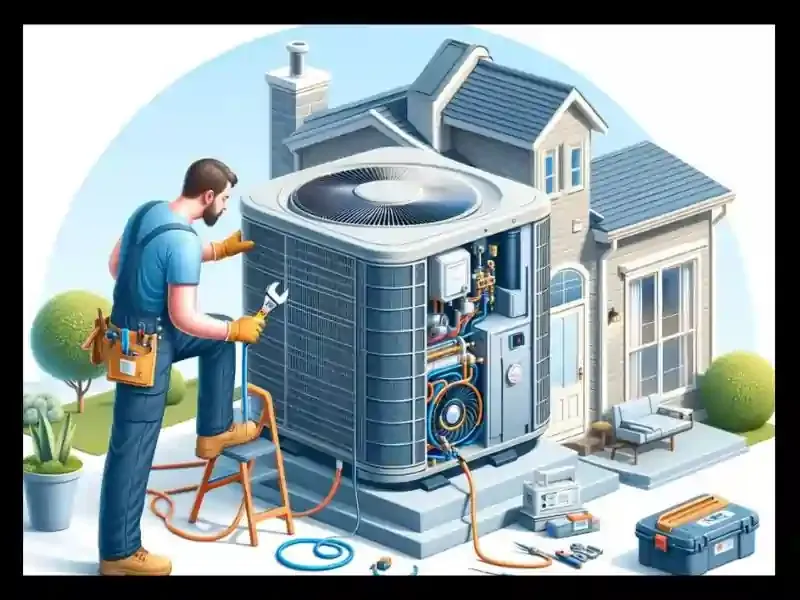One clearly can envision being on a road trip during a very hot summer day, and suddenly, your AC stops working; that would be awful. Taking care of your RV, especially the AC, is of paramount importance because it remains calm and comfortable while travelling. Not thinking carefully about its maintenance can backfire–ending up with it breaking down and creating large bills for fixing it.
What can you do to prevent this from happening and ensure your travels go smoothly without any AC trouble? We’ll explore some basic yet effective tips to keep your RV’s AC running and you feeling happy on your adventures.
Importance of RV AC System Maintenance
Checking the refrigerant levels, inspecting for leaks, and performing basic actions, such as cleaning or changing the air filters, are part of regular maintenance tasks for an RV’s AC system. It’s clear that upkeep is of paramount importance, not simply for the system to work better but also to avoid spending a large amount of money on repairs later.
If you don’t keep up with maintenance, your AC could stop cooling, consume more power, and even break down. However, keeping your AC in check by fixing problems right away and sticking to a maintenance routine will let you take advantage of it for a longer time; this means you can relax comfortably while you are away from home in your RV.
Signs of AC Overload Protector Issues
Seeing if your RV’s AC has issues with the overload protector is important for making everything nice; to show the details, taking care of your AC is not only simply about basic items such as washing filters or making sure there’s enough refrigerant.
To keep your AC running well and avoid spending much on fixes, you must watch out for signs something is wrong. Signs to watch for include your system shutting down often, getting too hot, or making abnormal noises—think clicking or buzzing. Also, if there are a large number of electrical surges, this might destroy the overload protector, and you might need a new one.
Check out other Articles.
Steps to Replace Overload Protector
So you must make sure the AC system in your RV isn’t receiving electricity. Then, you must find where the overload protector is, which is usually very near the compressor inside the unit. Now, carefully remove the old overload protector. Clearly, repairing your RV’s AC by swapping out the bad overload protector is of paramount importance to keep it working well.
When you bring in the new part, make sure the wires are connected just the way they were with the old one. Start the A/C after you have the new piece in to check everything’s working right. By keeping up with these steps, you’re making sure your RV stays well and avoids problems in the future. You might be able to come to a clear answer that doing things this way is smart and helps to keep the air fresh and moving smoothly.
Frequently Asked Questions
Can I Bypass the Overload Protector to Keep My AC Running?
It’s not a good idea to skip the overload protector when keeping an AC running; this thing stops the electrical system from getting too much electricity. I, not surprisingly, find that it’s of paramount importance for keeping the AC from breaking–and making sure it runs without any trouble.
How Often Should the Overload Protector Be Replaced in an RV AC System?
When your RV AC system starts bristling with abnormal sounds, gets too hot, or keeps turning off many times, you should replace the overload protector. If you check on it and change it every couple of years, you won’t have to spend a large amount of money fixing larger problems later. Almost inevitably, we see doing this keeps everything running smoothly.
Can a DIY Enthusiast Replace the Overload Protector, or Is Professional Help Necessary?
If you’re into DIY projects, swapping out the overload protector in your RV AC might seem wonderful–but be careful. One clearly can envision destroying something if you delve in without knowing what you’re doing. Always follow the instructions in the manual, such as safety first, and do not be afraid to go to an expert if things get too fraught.
Is There a Specific Brand or Model of Overload Protector That Is Recommended for RV AC Units?
It’s a smart and wise move to go for trusted names like Dometic when picking out guards for your RV AC; they make a model, 331213A8.000, that many people like because it keeps your air conditioning system safe. Saying reputable brands are your best bet for keeping your AC in good shape is in actuality a true statement.
Are There Any Common Mistakes to Avoid When Replacing the Overload Protector in an RV AC System?
When you’re swapping out the overload protector in an RV AC system, you really shouldn’t destroy the wire connections, forget to turn off the power, put the part in the wrong way, or skip checking how it works after you’ve installed it. Doing things the right way ensures your system runs smoothly. Nevertheless, incorrect part installation is a common blunder, but thinking scrupulously about the right steps is key to keeping the system working well.
Conclusion
To wrap it up, to stop your RV’s air conditioning from breaking down and costing a substantial amount of money to fix, you have to keep up with looking after it. It’s primarily focused on heading down the path to understanding and good judgment by staying on top of problems, like checking if the overload protector is not working properly — making sure air filters are cleaned — and keeping an eye on the refrigerant levels.
Being quick to fix whatever comes up is of paramount importance for making your AC last longer. This way, your RV’s air conditioning won’t stop working and can help the air stay nice and chilly while you’re out exploring.






